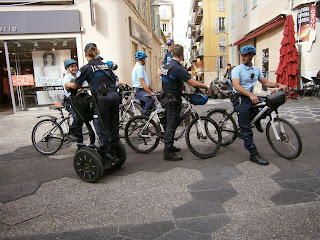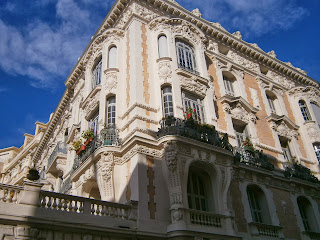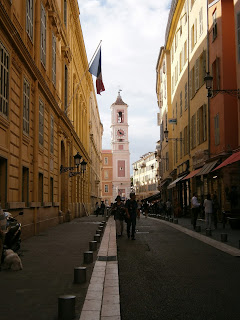Catalunya continues to move forward, getting closer
to holding a referendum and probably closer to their independence. Yesterday was a big day. Yesterday four of the six political parties
represented in the Catalan Parliament came to an agreement on the date that the
referendum will be held and the questions that the voters will be asked to
respond to. Artur Mas, President of
Catalunya, made the announcement at mid-day, accompanied by representatives
from all four parties. The excitement,
watching the announcement live on TV, made eating lunch difficult.
The date will be 9 November 2014. This is later than many people would like,
but was agreed upon for logistical reasons.
The ballot will contain two questions:
(1)
Do you
want Catalunya to become a state?
Yes or
No
If the response is Yes, then
(2)
Do you
want that state to be independent?
Yes
or No
What many people hoped for was the simpler
question, Do you want Catalunya to become an independent state? But there are those who want to change the
structure of Spain and make it a federal system much like the United States of
America. With the two part question,
those who want a state but do not want that state to be independent, can say
so.
The four political parties that reached this
agreement yesterday are of varied political ideologies. The CiU represents the Catalan right
wing. It is a party that historically
represents the interests of the bourgeoisie and business and is the party
currently in power in Catalunya. Near
the other end of the Catalan political spectrum is the ERC, the Catalan left
wing. They historically represent social
and worker interests and Catalan independence.
ICV is the Green party although they tend to be equally concerned with
social issues. And finally CUP, a
newcomer to the Parliament with a very small representation. To be honest, I don’t really know how to
define them. They seem to be some
mixture of leftist and anarchist and represent the anti-establishment sector. When they first showed up to take their seats
in Parliament after being elected, they were reprimanded for wearing t-shirts
to the august chamber. They still wear
t-shirts.
There are two other parties in the Catalan
Parliament, PPC and Ciutadans. PPC is
the Catalan section of the national PP party, a far right party that still
celebrates elements of the Franco dictatorship and currently holds the absolute
majority in the Spanish Congress.
Ciutadans is another, albeit very small, right wing party. I’ve been told that they are not right wing,
but from all I hear them say, I don’t see any difference between what these two
parties have to say except that the Catalan PP representatives usually say it
in Catalan and the Ciutadans usually say it in Spanish.
That the four parties mentioned above, CiU, ERC,
ICV, and CUP, spanning almost the complete political spectrum, could come to
this agreement after two days of meetings and negotiations, is nothing short of
amazing. It happened because in spite of
their differences, they are all determined that Catalans should be given the
chance to vote and determine their own future.
Not all of these politicians will vote Yes, Yes. Some are not in favor of independence. But they all think that in a democracy, a public
that has clamored for a referendum (polls say that 84% of Catalans want to
vote), should be able to vote on one.

This should serve as an example to American
politicians. If you want things to work,
if you want your country to keep moving forward, and if you want to do your job
properly and get things done, you need to compromise. All four of those parties compromised on the
date, or the question to be asked, or both.
Some wanted the date to be months earlier. Some wanted only one question asking only
about independence.
It took less than 30 minutes for the Spanish
President to respond. Catalunya will be
prevented from holding a referendum. He
maintains that a referendum is unconstitutional.
But the fact is, if a democratically elected body
such as the Catalan Parliament presents a formal request that the authority to
conduct a referendum be given to Catalunya (a similar mechanism by which
Britain gave Scotland the authority to hold theirs), because their citizens
want to vote, it should be given. Legal
experts say that the constitution allows for this. If they are wrong, then the constitution
could also be changed. The US
constitution has already acquired 27 Amendments from the time it was first
written. Constitutions are not carved in
stone. Laws should serve the people, not
oppress them.
In some parts of the US it used to be illegal for
a black to sit in a bus if a white person was standing. In Germany Jews had to wear black armbands
with yellow stars that identified them as Jews.
In South Africa there was apartheid.
In America owning slaves was legal.
Not all laws are good. A law that
doesn’t allow people to vote is not appropriate in a democracy.
So far, word is that most democratic countries
have taken notice of Spain’s intransigency.
I also heard that the US government response was that all Spaniards
should vote on such a referendum. If
true, I find that deeply disappointing.
Did America ask the English to vote on whether or not Americans were to
become independent?
We are all eagerly waiting to see what will happen
next.






































































